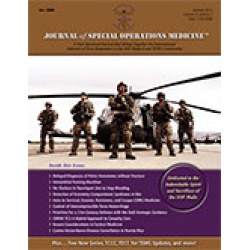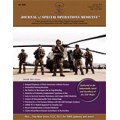Quality of Care Assessment in Forward Detection of Extremity Compartment Syndrome in War
King DR, Kragh JF, Blackbourne LH 13(2). 20 - 24 (Journal Article)
Background: Recent efforts to improve the quality of care in the Afghanistan theater have focused on extremity compartment syndrome, a common, disabling, and costly problem. To identify opportunities to improve care, the present survey was undertaken to observe the use of two standard methods-the traditional, improvised method and the common, off-the-shelf method-for determining intracompartmental pressures in the lower extremities of combat casualties. Methods: As part of a quality of care improvement effort during Operation Enduring Freedom, all combat casualties presenting to a forward surgical team at Forward Operating Base Shank from August to November 2011 with lower-extremity major trauma were evaluated for signs and symptoms of compartment syndrome. Results: Ten casualties had pressure measurement surveyed simultaneously using both methods. A two one-sided test analysis demonstrated a mean difference of -0.13 (90% confidence interval, -0.36 to 0.096), which indicated that the methods were similar. A repeated-measures analysis yielded a p value of .72, indicating no statistical difference between the methods. The receiver operating characteristic curve demonstrated excellent agreement within the prespecified limits (±2mm Hg, area under the curve 1.0), which indicated that the methods were similar. Conclusion: The main finding of the quality of care effort was that clinicians received similar information from use of two standard methods for far forward measurement of pressures to detect extremity compartment syndrome. This finding may help clinicians improve the quality of care in the theater in detecting, diagnosing, and monitoring compartment syndrome.


 Español
Español 




